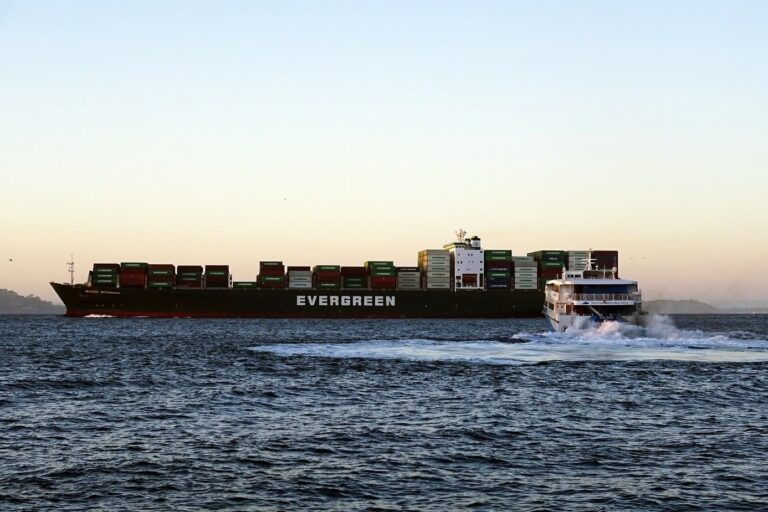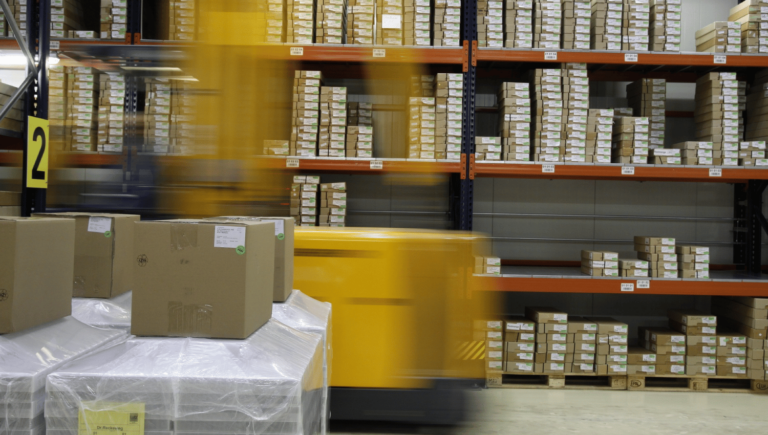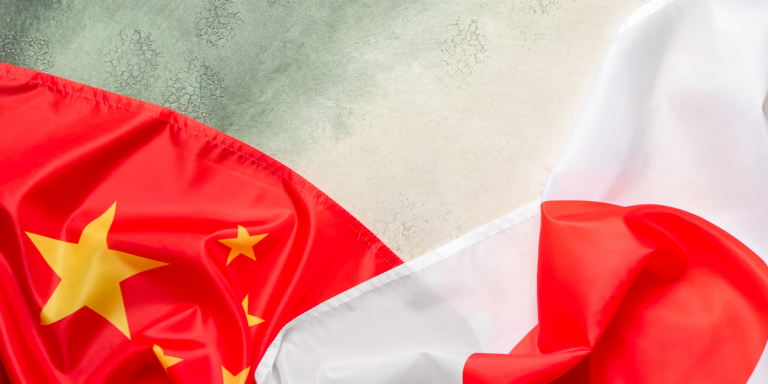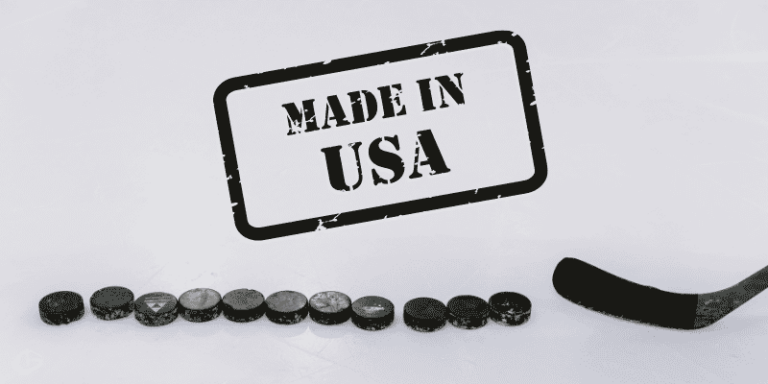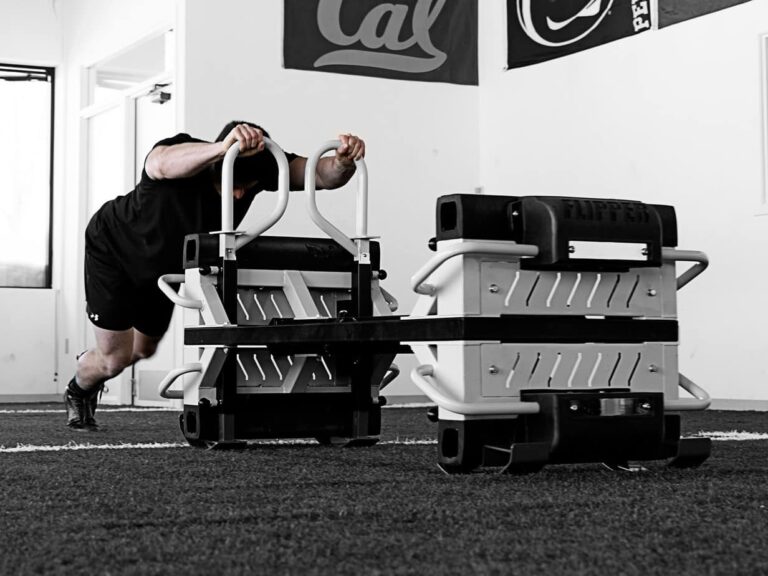Customs Regs: A Necessary Evil, or The Key to Competitive Advantage?
How those burdensome Customs rules and regulations imposed on importers and exporters can make companies more competitive and efficient.
Companies engaged in international trade are quick to complain about their regulatory burden. Indeed, one could cite countless cases of shipments delayed by agents of U.S. Customs and Border Protection for the importer’s failure to adhere to the slew of rules that governs cross-border commerce. And the number of regulations seems to grow every day, requiring importers and exporters to disclose the most intimate details of their goods, all the way back to the source of raw materials. In this conversation, excerpted from an episode of The SupplyChainBrain Podcast, we speak with Tammy Hetrick, senior trade adviser with logistics services provider A.N. Deringer Inc. She joins us to explain how smaller companies can leverage the efficiencies that result from regulatory compliance to compete with their bigger rivals.
Q: Importers and exporters complain endlessly about the burden of Customs regulations that they have to deal with on a day-to-day basis. Yet it’s your position that those regulations can prove to be an opportunity as well.
Hetrick: It certainly is. Many years ago, I started my career at U.S. Customs. When I left for the private sector to help a company build its compliance program, I was definitely seen as a necessary evil. But through the course of my compliance work, such as classifying products and understanding where and from whom the stuff came, it soon became apparent to me that there were opportunities well outside my main role of keeping the company out of trouble. Within the first year, I was able to use my expertise to improve process efficiencies, landed costs, and margins. Since then, I’ve made it my mission to prove to companies that we compliance professionals are more than a necessary evil. We can be your competitive advantage. I daresay that companies that confine their compliance staff entirely to compliance might not be leveraging their resources to the fullest extent.
Q: Give me an example of some regulations that have turned out to be of advantage to companies, as opposed to purely a burden.
Hetrick: Customs programs like C-TPAT [Customs-Trade Partnership Against Terrorism]. It puts the burden on importers to be very rigorous about their supply chains, and to examine them end to end. Anytime a program like this comes out, there’s a huge collective groan among the importing community. It can be a tough sell to companies that are already stressed by the economy, international competition, or environmental challenges. It’s usually sold by saying, “We don’t want that dirty bomb in our container.” But the truth is that I’ve yet to meet a company that hasn’t admitted that the rigor of C-TPAT certification actually paid off in unanticipated material ways. Many have found land mines in their supply chains that they were relieved to fix before they went off. They were able to fill gaps or move waste out of their processes, and find savings along the way.
They found similar results with ISA, the Importer Self-Assessment program. Most companies aren’t jazzed about ISA until Customs starts dropping CF 28s [Requests for Information] or talking Focused Assessments. The ISA certification process is arduous and resource-intensive, but it makes you a better company — not just in Customs compliance, but in general and across the board.
Q: Give me an example of a specific benefit that can be realized.
Hetrick: Let’s say you’re a supply-chain manager of an electronics company, bringing in 10 containers at a time. You can’t afford to have your stuff stuck. You learned this lesson the hard way — and nearly lost your job — when Customs pulled a container for an exam and ended up detaining all 10 because they were on a single bill of lading. To eliminate that risk in the future, you decided to limit one container to one bill of lading. So in the past two years, you’ve had 15 exams but only 15 containers detained, not 150, making you a big hero. But now your Customs compliance officer is coming to you and suggesting that you put 10 containers on a single bill again. The officer assures you that because your company is now C-TPAT- and ISA-certified, and a Trusted Trader partner of U.S. Customs, your risk of detention is nearly zero. Even so, you’re loath to take any risk. Then your compliance officer explains how much money your risk aversion is costing the company. Because your freight bill is complicated, you didn’t notice the $485 in merchandise-processing fees that you’re paying per container. And the 500 containers you imported last year cost you $250,000. Had you combined 10 containers on one bill of lading, you would have paid only $25,000. So suddenly you have the opportunity to be a hero again by consolidating your containers.
Q: C-TPAT and ISA are both voluntary programs. Of course, if you don’t “volunteer” to be in these clubs, you’re going to have some difficult times.
Hetrick: You are. ISA often is a “deathbed conversion” as well. Customs says, “We’re going to do a Focused Assessment,” and we say, “Actually, we’re going to be joining the ISA program, and we’ll do that audit for you.” There are risks involved in not joining these clubs. You’re going to have your freight examined more often, and detained.
Q: There are also a number of compliance measures that aren’t voluntary. For instance, Customs’ 24-Hour Rule, enacted in 2002, requires that vessel manifests be filed no later than 24 hours prior to the ship’s departure. That was a burden of sorts, but it also forced the importer and carrier to acquire a degree of visibility that was to their advantage.
Hetrick: Absolutely. When that rule first came out, everybody was up in arms. They said, “That’s impossible. We can’t possibly know what’s going to be in that container until we load it.” But we had been working for years as an industry to do container load planning, so we should know exactly what’s in all of those containers. The more we know, and the sooner we know it, the better we can plan downstream. The 24-Hour Rule forced all of us to codify what was good for us to do in the first place.
Q: Another example is the conflict minerals reporting rule [enforced by the U.S. Securities & Exchange Commission], although its status is currently in doubt due to recent court decisions. The idea of having to trace the provenance of certain minerals in your products all the back to the mine in the Democratic Republic of the Congo certainly seemed like a huge burden. But that also carries advantages in terms of achieving a level of visibility that you might not have had before, does it not?
Hetrick: That’s right. We should know exactly where all of our stuff is coming from. Especially in this day and age, with social media, no one’s going to get away with anything. There are reporters and hobbyists out there who are looking at certain companies. They can find out almost as much information about your supply chain as you can. You’d rather be out in front of that, in case there’s something you didn’t know about. Conversely, if you have a great supply chain, and are doing everything in a very above-board and sustainable way, that’s something that you want to be able to tout with confidence.
Q: We’ve been talking about some of the “sticks” that Customs puts in our way, and that we can turn to our advantage. But there are “carrots” as well — programs that importers might not be taking full advantage of, such as duty drawbacks and foreign trade zones. Do you feel that the industry doesn’t pay enough attention to those?
Hetrick: Yes, and they don’t even know they exist. For example, the Miscellaneous Tariff Bill comes up every three years. I was introduced to it years ago when I worked for a company that made footwear. We created a boot made with textile uppers, instead of rubber or plastic. It had never existed before, so there was no special breakout in the textile and footwear tariff, and Customs had no idea where to put it. So we ended up with a duty rate of nearly 20 percent, which basically demolished the margin that we had on that boot.
I asked Customs how we could get a breakout in the tariff for this type of boot. They told me it takes an act of Congress. I asked, “How do you do an act of Congress?” And they said, “We have no idea.” So I contacted my congressional delegation. They were very helpful. They said, “The good news is that we can do a breakout. The bad news is that it takes two years to do that. But in the meantime, why don’t you consider petitioning for inclusion in the Miscellaneous Tariff Bill?” This bill was set up for importers of brand-new products that don’t have a domestic industry that they would be competing against, or putting in a bad place. We petitioned and worked with the International Trade Commission. In the end, we were successful and were able to import the boots for three years absolutely duty-free.
Q: How long did it take you to get duty-free treatment?
Hetrick: All told, it took me probably about six months. I went to Washington, D.C., and lobbied not only our congressional delegation but those of 12 other states as well. It was a great project. That innovation was the only way we could compete against the behemoths. It really made me feel like I was doing my company a huge service. Footwear can be such a nightmare — you really need to know your stuff, to be able to leverage the tariff to your advantage.
Q: What about foreign trade zones?
Hetrick: When it comes to regulation, we’re not sure what’s going to happen in the next couple of years. One thing I think that’s fairly certain is the administration’s focus on bringing manufacturing back to the United States. Companies aren’t going to become 100 percent vertically integrated in Year One; they’ll continue to rely on overseas suppliers for specific parts and components for years. For the manufacturing and assembly that does come back, I would wager that more and more of it will be taking place in foreign trade zones.
A lot of people use FTZs now as bonded warehouses, which are highly regulated. You have to keep your goods segregated. Whereas in an FTZ, you get the same duty-deferral benefits, but if you have a robust warehouse-management system and a great compliance team, and you’re willing to embrace the burden of running an FTZ, you can operate that facility pretty much like any general-purpose warehouse or distribution center. You can bring in hundreds of containers from all over the world. If you qualify for weekly entry, you can file one entry a week, and therefore pay $485 max a week, or $25,000 a year per location, rather than $485 per container. Also, similar to a bonded warehouse, you don’t pay duty until you withdraw the goods for consumption. So if you have two or three months’ worth of inventory, then you can delay payment of duty for however long you have your inventory there.
For manufacturing, a lot of companies may be able to take advantage of the inverted tariff benefit. If you are importing parts at a high duty rate and the finished good you’re producing is subject to, say, only 2 percent duty, you can opt to clear those parts at the rate of the finished good. Running an FTZ is not for the faint of heart, but if you’ve got what it takes, and you partner with good people who know what they’re doing, then that would be a huge advantage to you over your competition.
Q: FTZs have been marketed over the years with varying degrees of success. Are you suggesting that we’re in a new era of embracing the concept?
Hetrick: I am. One of the reasons that FTZs aren’t used more is that a lot of Customs folks approach them like they’re bonded warehouses. And customers who go to a port and try to set up a zone are given guidelines that are so restrictive that they can’t operate. Last year, I had to stand up four FTZs. I had to apply to four different ports of entry, dealing with four different port authorities and Customs infrastructures. Every one of them had a different application process, fees that had to be paid, and different approaches to how these FTZs should be run. That meant we had to develop procedure manuals for each individual location. With this administration’s push toward domestic production, there will be a corresponding push to the Customs community to unify its approach to FTZs and achieve a deeper understanding of an FTZ versus a bonded warehouse. Once everybody’s on the same side of this, the operation of FTZs is going to become much easier and more attractive to companies.
Q: How can we go about creating this unified environment?
Hetrick: What if we could get Customs to dedicate a center of excellence to FTZs? In my opinion, that would be great. All FTZ applications would go through it, so there would be one body that’s an expert on FTZs, and it would make sure that FTZs across the country were operated in a similar fashion. We would have one single approach from a Customs perspective to how these things should be run.



